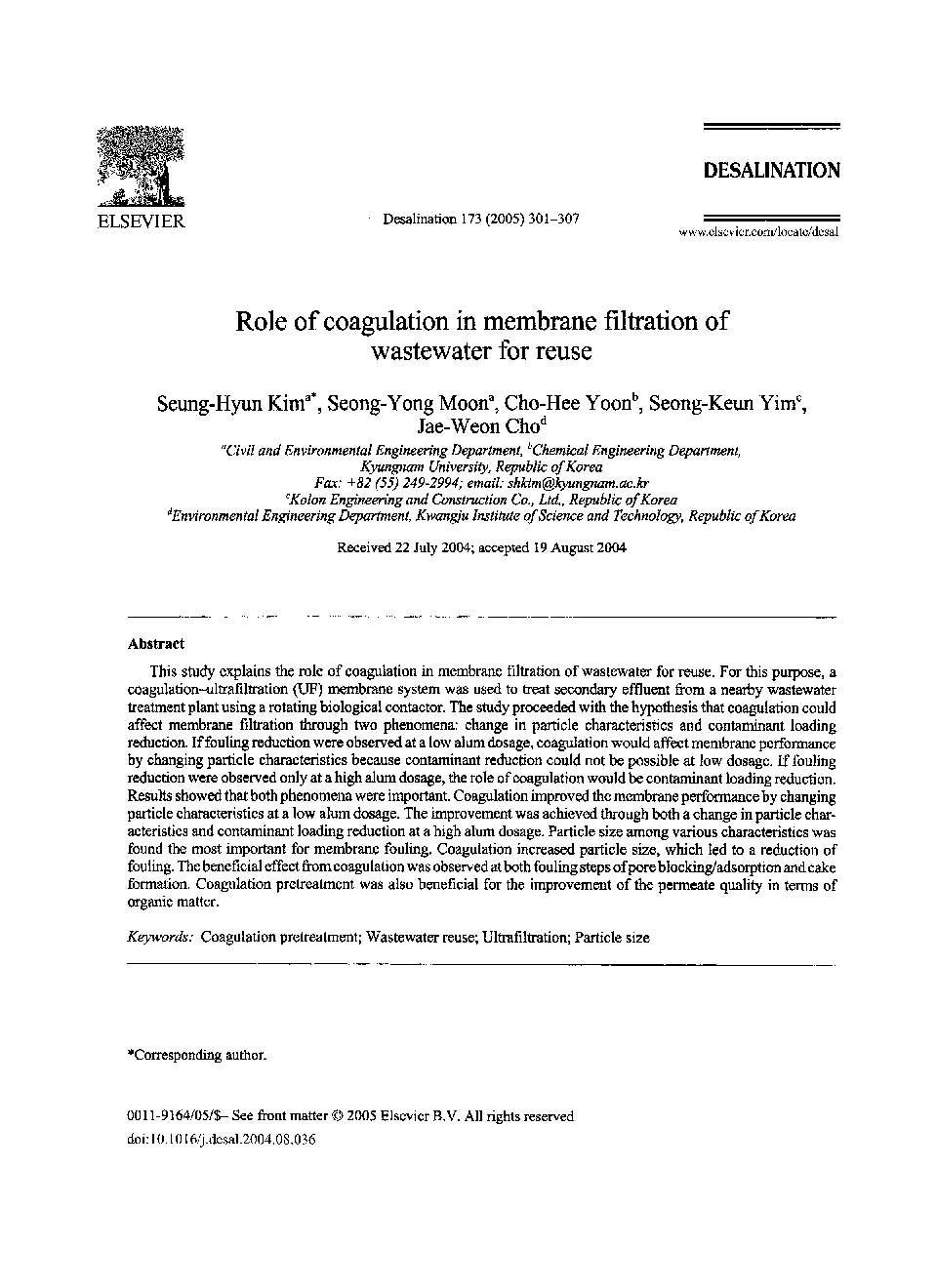| Article ID | Journal | Published Year | Pages | File Type |
|---|---|---|---|---|
| 10386212 | Desalination | 2005 | 7 Pages |
Abstract
This study explains the role of coagulation in membrane filtration of wastewater for reuse. For this purpose, a coagulation-ultrafiltration (UF) membrane system was used to treat secondary effluent from a nearby wastewater treatment plant using a rotating biological contactor. The study proceeded with the hypothesis that coagulation could affect membrane filtration through two phenomena: change in particle characteristics and contaminant loading reduction. If fouling reduction were observed at a low alum dosage, coagulation would affect membrane performance by changing particle characteristics because contaminant reduction could not be possible at low dosage. If fouling reduction were observed only at a high alum dosage, the role of coagulation would be contaminant loading reduction. Results showed that both phenomena were important. Coagulation improved the membrane performance by changing particle characteristics at a low alum dosage. The improvement was achieved through both a change in particle characteristics and contaminant loading reduction at a high alum dosage. Particle size among various characteristics was found the most important for membrane fouling. Coagulation increased particle size, which led to a reduction of fouling. The beneficial effect from coagulation was observed at both fouling steps of pore blocking/adsorption and cake formation. Coagulation pretreatment was also beneficial for the improvement of the permeate quality in terms of organic matter.
Related Topics
Physical Sciences and Engineering
Chemical Engineering
Filtration and Separation
Authors
Seung-Hyun Kim, Seong-Yong Moon, Cho-Hee Yoon, Seong-Keun Yim, Jae-Weon Cho,
